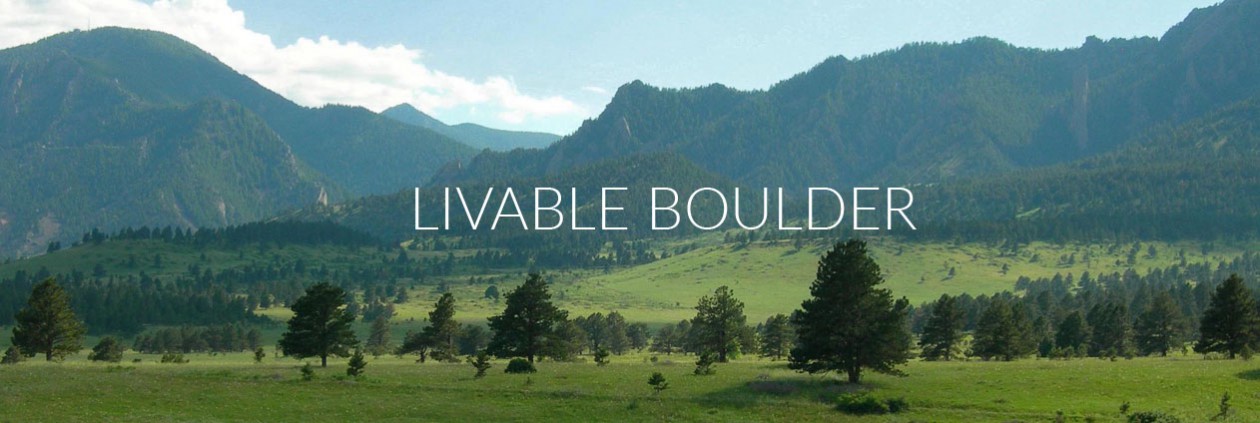| POSTED: 01/31/2015 04:20:00 PM MST Daily Camera, Boulder, CO These pages have recently hosted a lively discussion over the fate of the Joder property, an OSMP parcel north of town, with an array of interest groups weighing in on the issue. Joder is today’s focus, but moving into a future where management of our public lands will become increasingly necessary, recalling some of the watershed events that gave Boulder its abundance of natural areas might be useful. Beginning in 1967, Boulder citizens made history by taxing themselves to secure open space — the first city in the U.S. to do so — and six years later lobbied successfully for a separate department to procure and manage these lands. The Boulder County Comprehensive Plan was formally adopted in 1978 with the stated aim that “preservation of our environmental and natural resources should be a high priority in making land use decisions.” That same year the Indian Peaks was designated as a national forest wilderness area, the most secure level of protection within the federal domain. Both of these milestones came about in no small part through the efforts of local activists. In 1986, an amendment to the city charter providing stronger protection for open space lands was adopted by 77 percent of the voters. This amendment explicitly calls for the preservation of natural ecosystems. Since 1986, city voters have approved three separate tax measures in support of OSMP (1989, 2003, 2013). The 1980s also witnessed citizen conservationists inventorying high-quality ecosystems in Boulder County, leading to their designation as Environmental Conservation Areas. ECAs were subsequently incorporated into the County Comprehensive Plan and the National Forest Management Plan (1997). In 1993 voters supported these efforts through an open space sales tax, allowing the county to acquire significant tracts of lands such as the Hall and Heil ranches. Finally, over the course of 25 years, three parcels of OSMP land were designated as State Natural Areas “to preserve some of the finest examples of Colorado’s original and unique landscapes for the benefit of present and future generations.” These included the Colorado Tall Grass Prairie (1984), South Boulder Creek (2000), and 7,000 acres of the Boulder Mountain Park (2009). These events highlight Boulder citizens’ support to secure protection of our public lands, and the clear intent that the focus of preservation was upon the lands’ ecological values. Yet no protection is permanent. Steady vigilance is necessary to preserve the integrity of this conservation network. The current development proposal at Eldora poses a direct threat to the Middle Boulder Creek wildlife corridor, a principal reasons citizens oppose the expansion. The specter of climate disruption has understandably consumed the attention of environmentalists over the last decade. Yet it can be credibly maintained, both scientifically and ethically, that the extinction and extirpation of species may be of greater consequence to the diversity of life on earth. The World Wildlife Fund recently reported a 50 percent loss in the collective number of fish, amphibians, reptiles, birds, and mammals across the planet in the last 40 years. Human population doubled over the same period. One of the consequences of this focus upon climate disruption has been a turning away from traditional conservation and the emergence of “environmental-modernists” — a new version of environmentalism emphasizing technology and urbanism. This new view appears to be more a return to the old, albeit dressed in Patagonia fleece instead of Brooks Brothers tweed. Wild nature is valued for the “ecosystem services” it provides to humans; corporate partnerships are championed; and the idea of wilderness is an obsolete anachronism. The views of the eco-modernists have become a touchstone for some of the newer critics of OSMP. What they don’t seem to recognize is not only that their science and ethics are suspect, but more importantly, that the loss of wild nature is a profound and disheartening disaster to the spirit of people everywhere. The future of Boulder’s heart and soul may be balancing on a precipice. Will we move toward increased density with its attendant crowding, noise, and pollution; grow into an expanded urban area with fine restaurants and excellent recreation opportunities; enjoy our glimpses of the Flatirons through slots in the canyons of new buildings? Or will we guard like rare treasures the places and the institutions protected and established by those who preceded us, here where the Great Plains meet the Rocky Mountains? Will we remember the virtues of moderation? Can we leave a few dollars on the table, walk out into the night air to look up at the tough old stars above the Flatirons, and recall where our true values reside? Tim Hogan lives in Boulder. |
